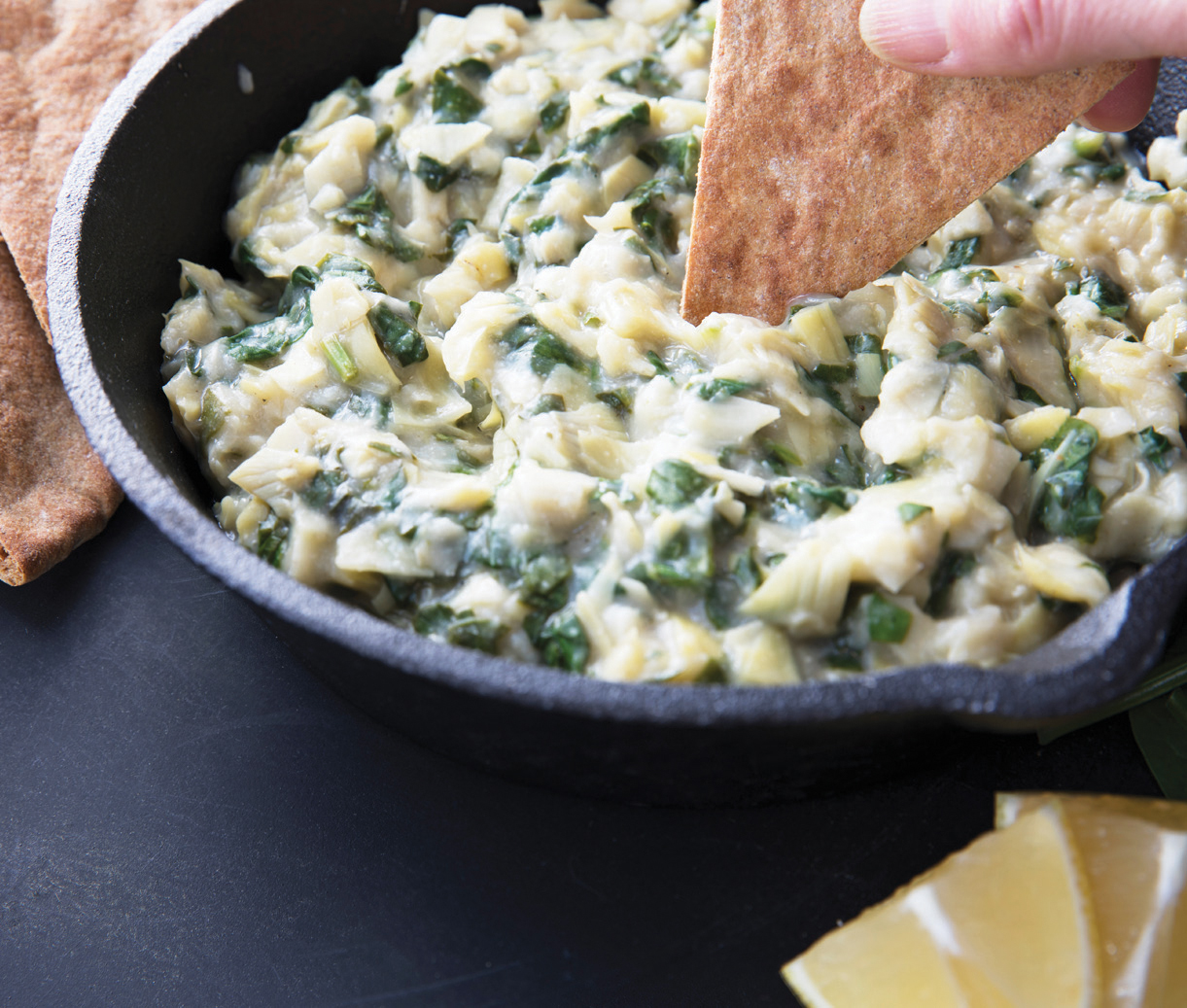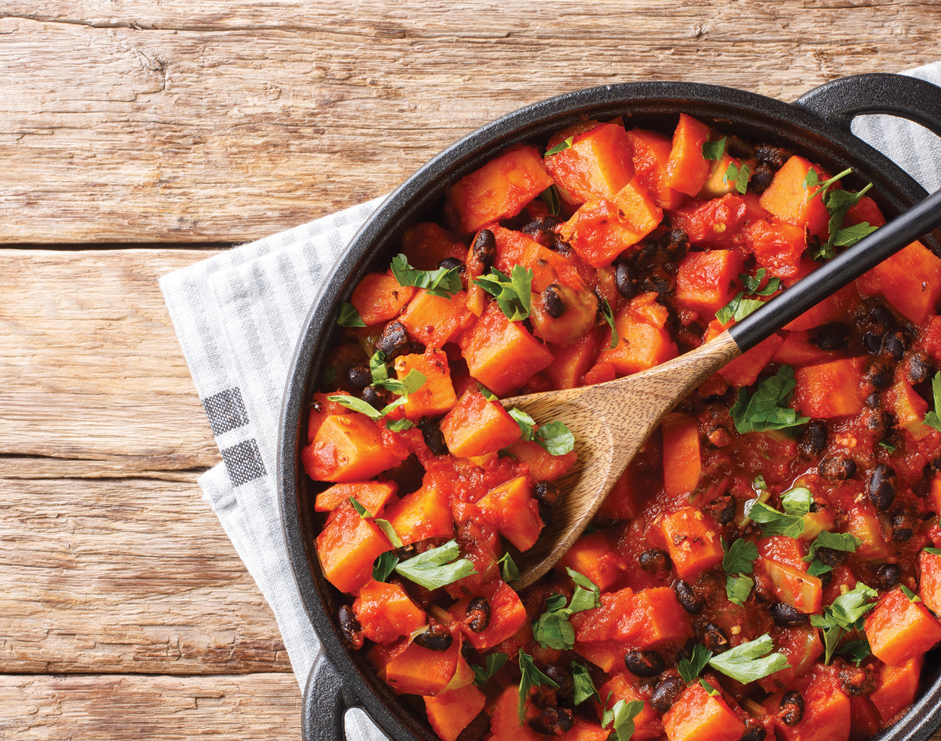It turns out fiber is your
friend. According to
CalvertHealth registered
dietitian Karen Mohn,
RD, LDN, CDCES, it
offers a treasure trove
of health benefits. It can help
lower your risk of heart disease
and diabetes, improve gut health
and make it easier to maintain a
healthy weight or lose weight.
Yet, some 90 percent of American
adults don’t eat enough each day.
Recently, we sat down with Mohn
to learn more about why fiber is
such a powerhouse nutrient.
Fiber Fundamentals
“Basically, dietary fiber is the roughage or bulk in your diet
that is non-digestible,” said Mohn. “It passes through your
body relatively intact, keeping your digestive system clean and
healthy, easing bowel movements, and flushing cholesterol and
harmful carcinogens out of your body.”
Mohn said it’s important to understand fiber comes in two
varieties – soluble and insoluble – and they act differently in
your body. “Soluble dissolves in water and helps control blood
sugar levels and reduce cholesterol. Good sources include
oatmeal, beans, nuts and fruits such as apples, berries and
pears.
“Insoluble does not dissolve in water. It is the bulky fiber that
helps to prevent constipation and is found in whole wheat flour,
grains, nuts, beans and vegetables like cauliflower, green beans
and potatoes.”
She went on to add, “Many foods contain both soluble and
insoluble. In general, the more natural and unprocessed the
food, the higher it is in fiber. There is no fiber in meat or dairy.
“You do need both, which is why I suggest eating a variety
of food fiber sources,” said Mohn. “As a general rule, men need
30-38 grams of fiber per day and women need 20-25 grams.”
She offers this tip when reading food labels. “You want at least 3 grams of fiber for it to be considered whole grain or a good source of fiber. This is especially important to note when you’re looking at breads and cereals.”
Mohn also advises increasing your fiber intake slowly over time to help your body get used to it. “Drinking more water as you add more fiber can also help with any gas or bloating you may experience.”
As a dietitian, she recommends getting your fiber from food sources over taking supplements. “Fiber supplements don’t provide the variety of fibers, vitamins, minerals and other beneficial nutrients that foods do.” However, she said, fiber supplements may be necessary for some people with certain medical conditions.


Artichoke, Spinach & White Bean Dip
This healthy version of the popular appetizer is sure to be a hit on your next game day.
INGREDIENTS
2 cups artichoke hearts
1 tablespoon black pepper
4 cups chopped spinach (frozen is OK)
1 teaspoon minced dried thyme
2 cloves garlic, minced
1 cup cooked white beans
2 tablespoons grated parmesan cheese
½ cup reduced-fat sour cream
DIRECTIONS
- Heat oven to 350 degrees. Mix all ingredients together. (Puree white beans if you want to have a smoother consistency).
- Put in a glass or ceramic dish and bake for 30 minutes. Serve with vegetables or whole-grain bread or crackers. Makes 8 servings.
NUTRITION FACTS
Per ½ cup serving: 123 calories, 3 grams fat, 16 grams carbohydrates, 8 grams fiber and 8 grams sugar
Why it Works
“The #1 thing fiber helps is maintaining good bowel health,” said Mohn. “Soluble fiber helps to lower your cholesterol, reducing your risk of heart disease. It binds with the LDL (or bad cholesterol) and doesn’t allow it to be absorbed.
“It also helps control blood sugar, too. That’s for everyone, not just diabetics. Everybody’s blood sugar fluctuates. Fiber helps slow down the rate at which things digest and get into the bloodstream and become glucose.”
Fiber is a natural appetite suppressant. “Because it sits in your stomach longer and it takes longer to digest,” Mohn explained, “fiber helps to promote a sense of feeling full.”
She went on to add, “If your blood sugar is not spiking up or down, then you have more consistent energy. Fiber keeps you more satisfied, so you’re not overeating. We make better food choices when our blood sugars are normalized.
“Additionally, the good bugs that make up your microbiome feed off fiber and flourish,” explains Mohn. “Healthier gut bacteria help lower inflammation, which has been linked to obesity and nearly every major chronic health problem.”
She stressed, “One of the best ways to maintain a clean and healthy colon and digestive tract is to get enough dietary fiber. Colon cancer has been linked with a high-processed diet and chronic constipation.”


Sweet Potato & Black Bean Chili
This quick vegetarian chili is chock full of fiber. Make a double batch and freeze the extras for lunch or dinner another day.
INGREDIENTS
1 tablespoon plus 2 teaspoons extra-virgin olive oil
1 medium-large sweet potato, peeled and diced
1 large onion, diced
4 cloves garlic, minced
2 tablespoons chili powder
4 teaspoons ground cumin
½ teaspoon ground chipotle chili pepper
¼ teaspoon salt
2½ cups water
2 15-ounce cans black beans, rinsed
1 14-ounce can diced tomatoes
4 teaspoons lime juice
½ cup chopped fresh cilantro
DIRECTIONS
- Heat oil in a Dutch oven over medium-high heat. Add sweet potato and onion and cook stirring often, until the onion is softened, about 4 minutes.
- Add garlic, chili powder, cumin, chipotle and salt and cook, stirring constantly, for 30 seconds.
- Add water and bring to a simmer. Cover, reduce heat to maintain a gentle simmer, and cook until the sweet potato is tender, 10 to 12 minutes.
- Add beans, tomatoes and lime juice; increase heat to high and return to a simmer, stirring often, Reduce heat and simmer until slightly reduced, about 5 minutes. Remove from heat and stir in cilantro.
Make ahead tip: Cover and refrigerate for up to three days or freeze for up to three months.
Makes 4 servings
NUTRITION FACTS
Per 2-cup serving: 323 calories, 13 grams protein, 55 grams carbohydrates, 16 grams fiber, 13 grams sugar and 8 grams fat
Fitting in More Fiber
“Fruits and vegetables in their most natural form are good choices for fiber,” said Mohn “It’s a good idea to get at least four to five servings each day and spread them out throughout the day.
“For example, start your day with oatmeal topped with berries,” she said. “Maybe, at lunch you have chili or lentil soup and some whole-grain crackers and an apple. As an afternoon snack, you might have cut-up veggies with some hummus. And at dinner, have a potato and a serving of vegetables with fruit for dessert.”